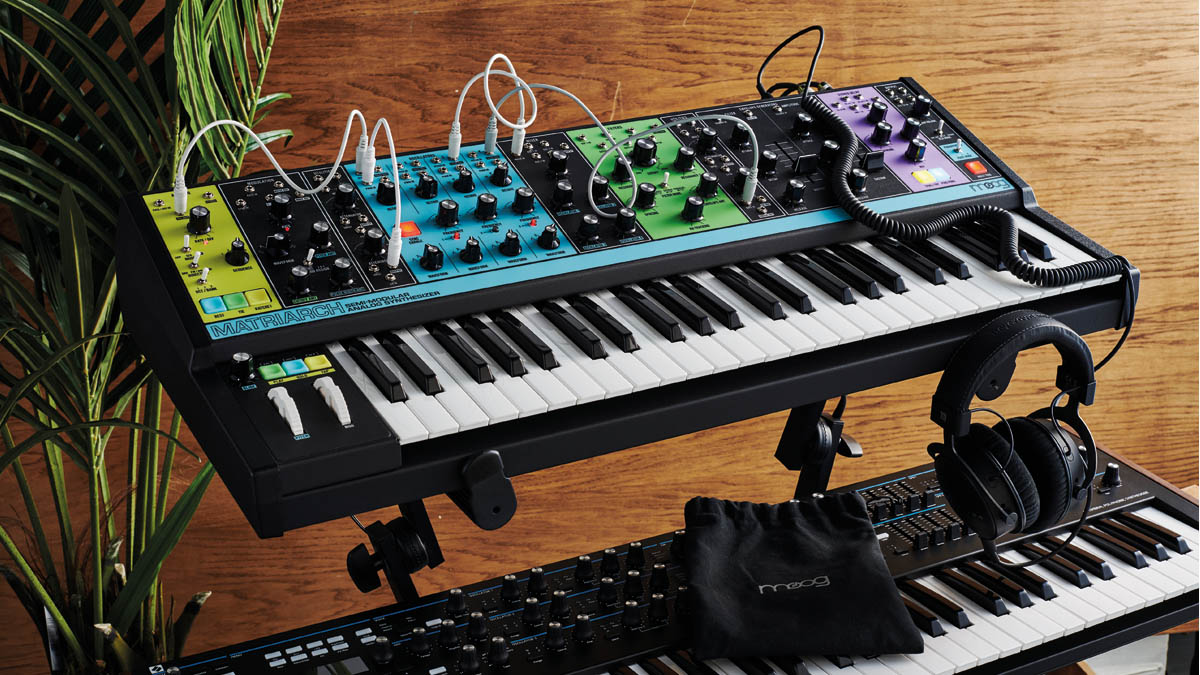MusicRadar Verdict
The Matriarch is very inspiring. It’s well built, has the classic Moog Modular sound and is complex yet intuitive. A future classic!
Pros
- +
It sounds wonderful and it’s beautifully built and designed.
- +
Though complex, it’s surprisingly intuitive.
- +
Patchability allows for full modular exploration.
- +
Can cover all manner of classic analogue and futuristic/spacey tones.
Cons
- -
It’s not cheap (but is kind of a self-contained Moog modular).
- -
The colourful panel might not be to everyone’s tastes.
- -
No presets means once your sound is gone, it’s gone forever!
MusicRadar's got your back
What is it?
Moog is still the most well-recognised name in synthesis, some 67 years after launching. The company has gone from strength to strength since it launched the Voyager in 2002 (which is now regarded as a modern classic).
Following on from the Voyager came the Little Phatty (the last synth design Bob had a direct hand in before his death), the Sub and Subsequent range, the flagship One and the ‘Mother’ range of semi-modular machines. In front of us today is the rather colourful and playful-looking Matriarch; but make no mistake, this is one serious piece of kit.
Opinions are divided on the look but we love the pastel shades on the front panel. Recent Moog designs have been more in line with classic Moog design language (black front panel and wooden sides), but the Matriarch (and its Grandmother sibling) hark back to the more colourful plastic/metal, designs laid out by The Source, Satellite and Realistic MG-1 (a Moog design sold by Radio Shack but manufactured by Moog).
The colours aren’t just there for looks – they serve a function, making clear distinctions on the panel between the ‘modules’, and the various inputs and outputs on the rear are also colour-coded, linking nicely to the front panel. It all feels warm and friendly right from the get-go.
The oscillators are based on the Minimoog Voyager (and not Moog’s modular range) and so you get greater stability but still with plenty of fatness and bite
With regards to the front panel, there’s no silk-screening for the panel legending (which can scratch off easily); the whole front panel is a super-tough ‘Lexan’ sticker. Every one of our synths with Lexan stickers for their panels still looks like new.
The knobs on the panel are all familiar Moog issue (either ‘chicken head’ style or skirted black plastic with silver-disc inserts) and feel premium under the fingers with a nice resistance and accurate response so you can dial sounds in reliably every time.
There are also some lovely sturdy flick switches with white caps for various functions and some super-stylish ‘sweet-shop’ style backlit buttons on the left-hand controller for sequencer/octave control/hold and for osc sync, delay controls/tap tempo. All together these quality component parts form a rather unique, inviting and very intuitive interface.
Performance and sounds
If we start on the left you’ll find the first of the 11 modules (the sequencer/arp) and a quick note: these aren’t removable modules – they are embedded and pre-wired like an MS-20 or other semi-modular synth but you can use the included patch cables to significantly reroute things via the connections on each module and at the rear.
The sequencer section is surprisingly easy to use and allows you to create keyboard-transposable sequences at any tempo (and with tap tempo) up to 256 steps in length with up to four notes per-step. Simply set the toggle switch to Rec, play some notes into your sequence, hit the green play button on the left-hand controller and you’re off – your sequence will be auto-saved to the slot and retained after powering down.
In Rec mode you can also add ratchets per-step (fills and trills) or ties and rests easily too, all with no screen in sight (there are no presets of any sort on this machine apart from that you can save up to 12 sequences over three banks, selected with the oct/bank switch).
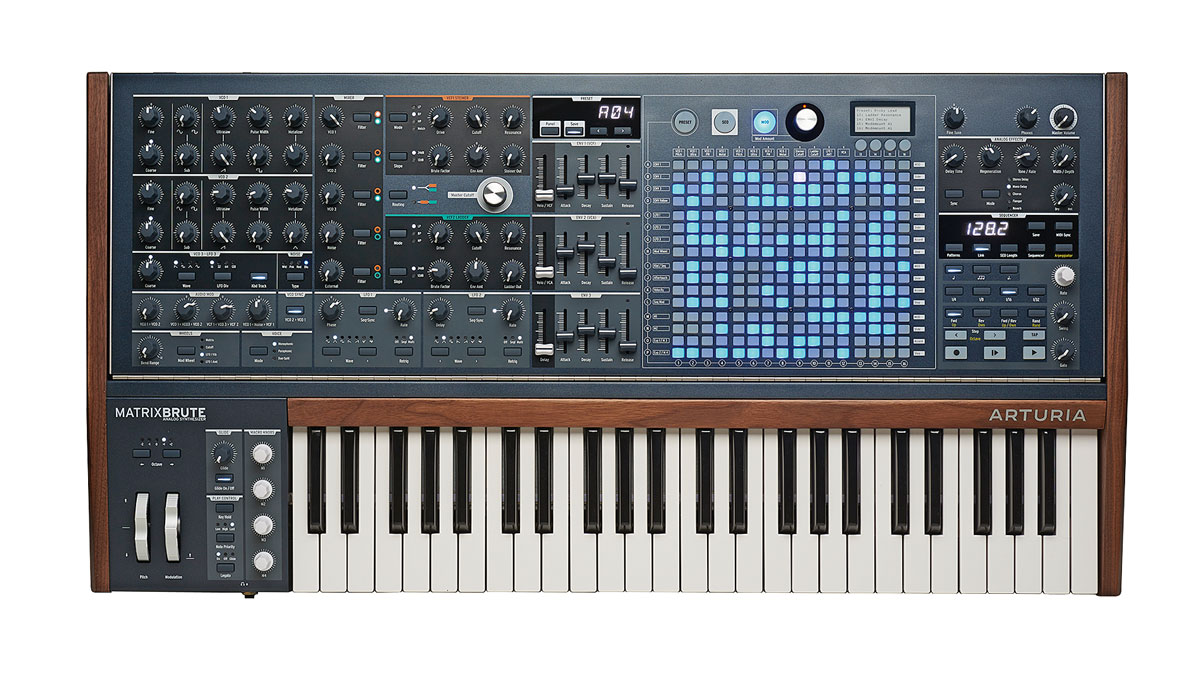
• Arturia MatrixBrute
A three-voice paraphonic analogue monster with versatile ‘brute’ oscillators, ladder/ Steiner filters, killer analogue effects, presets and hybrid matrix.
• Behringer Poly D
The fully analogue Poly D puts four Ds into a single box with 37 keys, four-voice paraphony, a Juno-style chorus, a 32-step sequencer, an arpeggiator and a variable distortion circuit.
As expected, there’s also an arpeggiator with octave range control and the direction switch employs several modes which can be applied to both arps and sequences including random, forward/backward, and order (as originally played) modes.
Being semi-modular, you can also send sequencer velocity, CV and gate out and have external devices control rate/division input. So in this first module alone there’s plenty of power (and you can seamlessly switch between sequences too for more extended/smooth performances).
Moving onto the oscillator section, the Matriarch has four beautiful sounding oscillators with unison, two-voice and four-voice paraphonic modes via a switch to the far right of the panel (you can play chords of up to four notes but each oscillator is articulated by a single amp and filter envelope rather than a standard poly,which will have an amp and filter envelope per-voice).
The oscillators are based on the Minimoog Voyager (and not Moog’s modular range) and so you get greater stability but still with plenty of fatness and bite (the Voyager has been my go-to bass/lead machine since 2004). Also notable is that the Matriarch gets up to pitch almost instantly (unlike the Voyager which needs about 15 mins).
Each oscillator has a wide frequency range and a choice of four waves (there are no variable osc waves like the Voyager, however that isn’t an issue with 90 physically patchable points and the versatile controls available to shape sonics)!
Oscillator sync is also onboard and three round red backlit switches select which oscillators have sync applied to them. For modular heads, you also have three CV inputs (pitch, linear FM, PWM) and a wave output per-oscillator too.
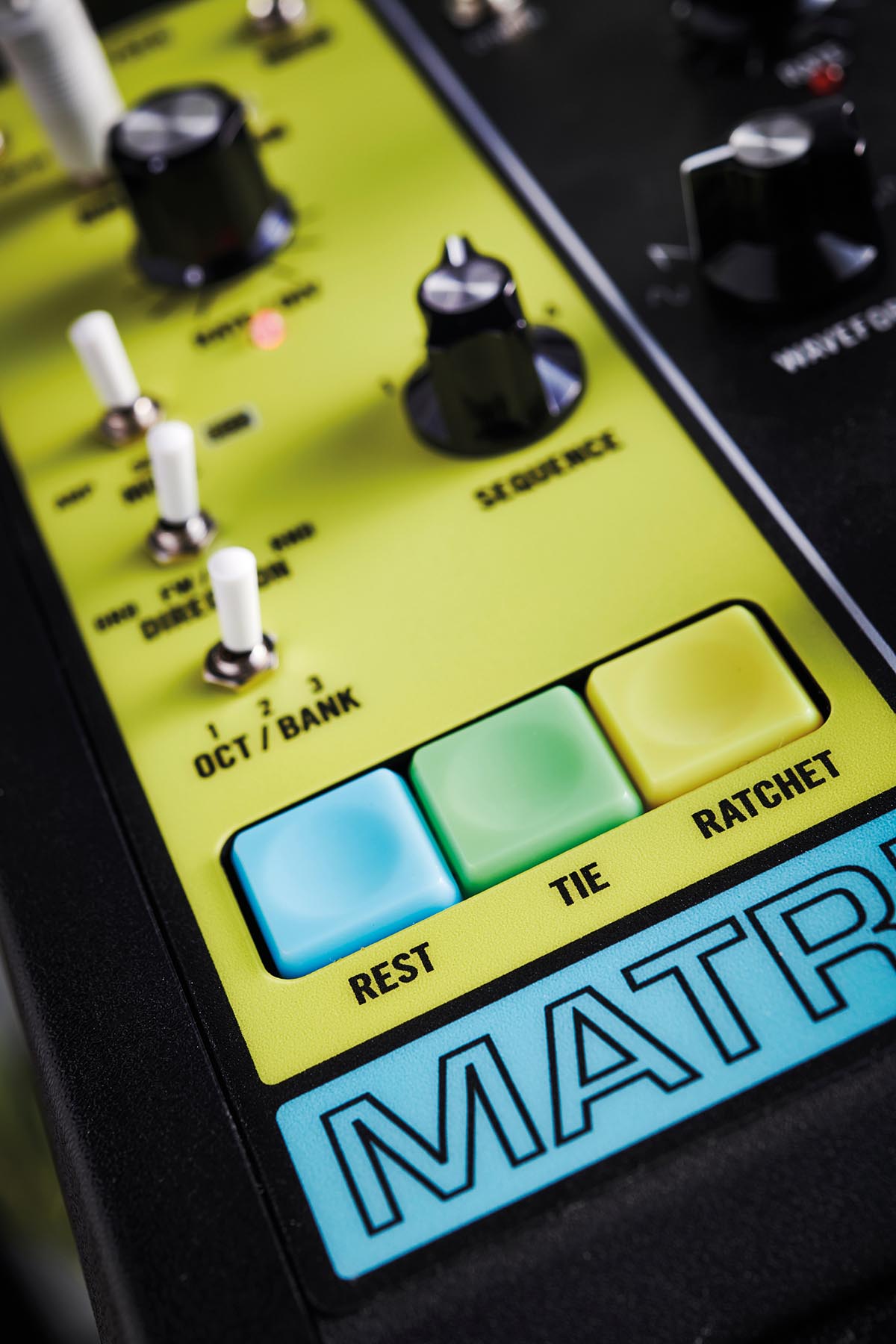
The Matriarch's colour-coding won't be everyone's cup of tea but it's practical, especially in low-light situations.
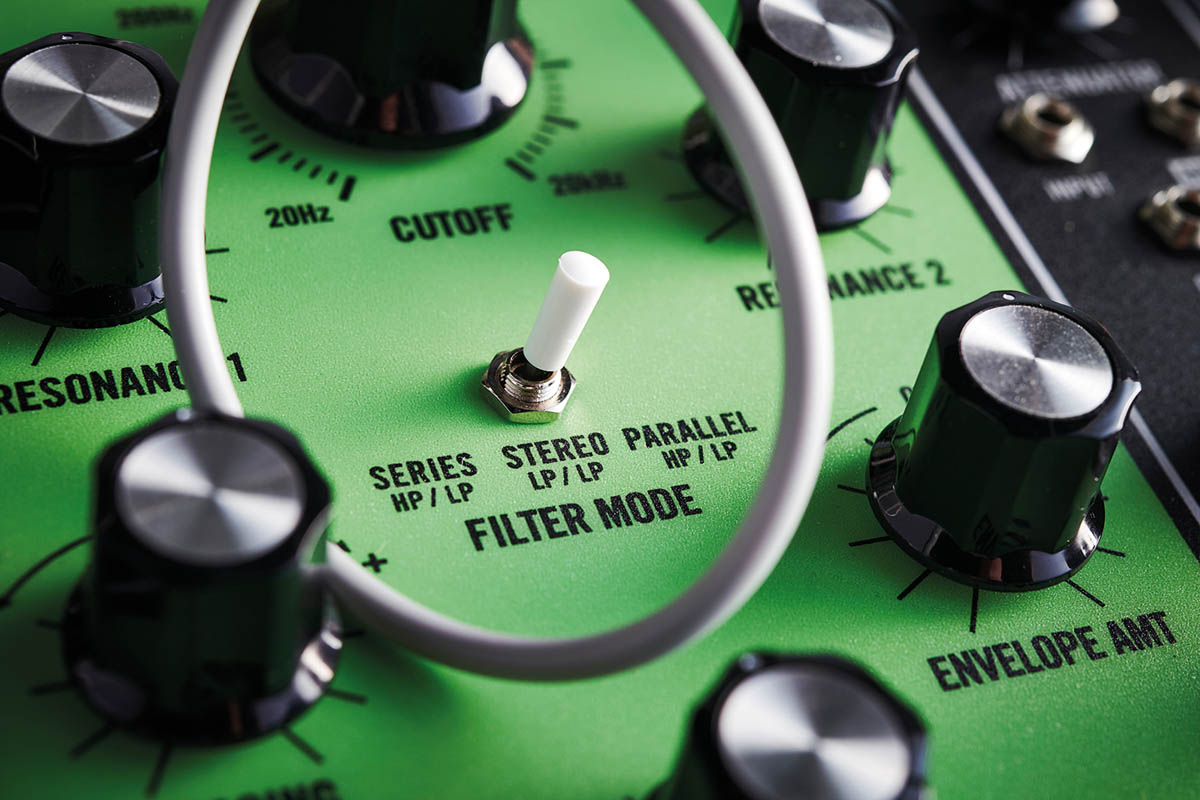
The filter section is based on the much-loved Moog 904A module and is hugely versatile.
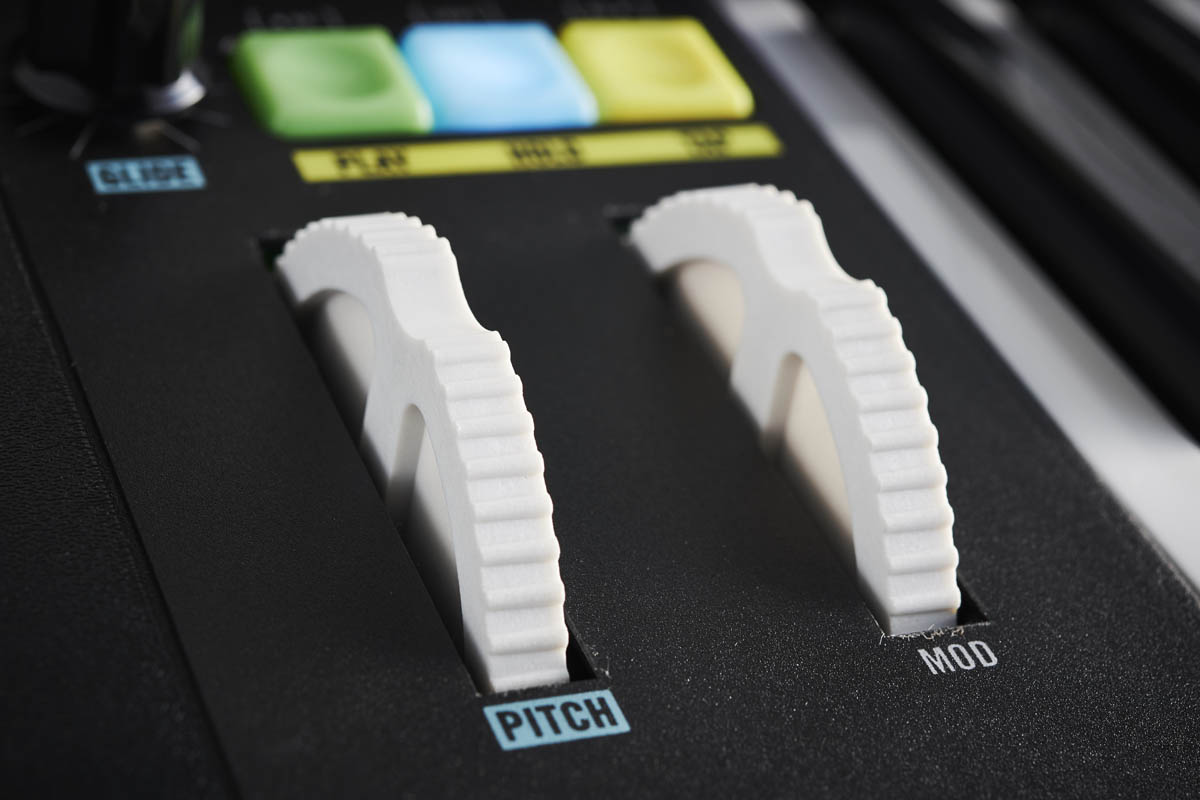
The left-hand controls feature classic Moog pitch and mod wheels, octave-shift controls and poly-glide.

The rear panel has Jack/Eurorack outs, MIDI in/out/thru, USB, delay outputs, sustain/expression inputs and more.
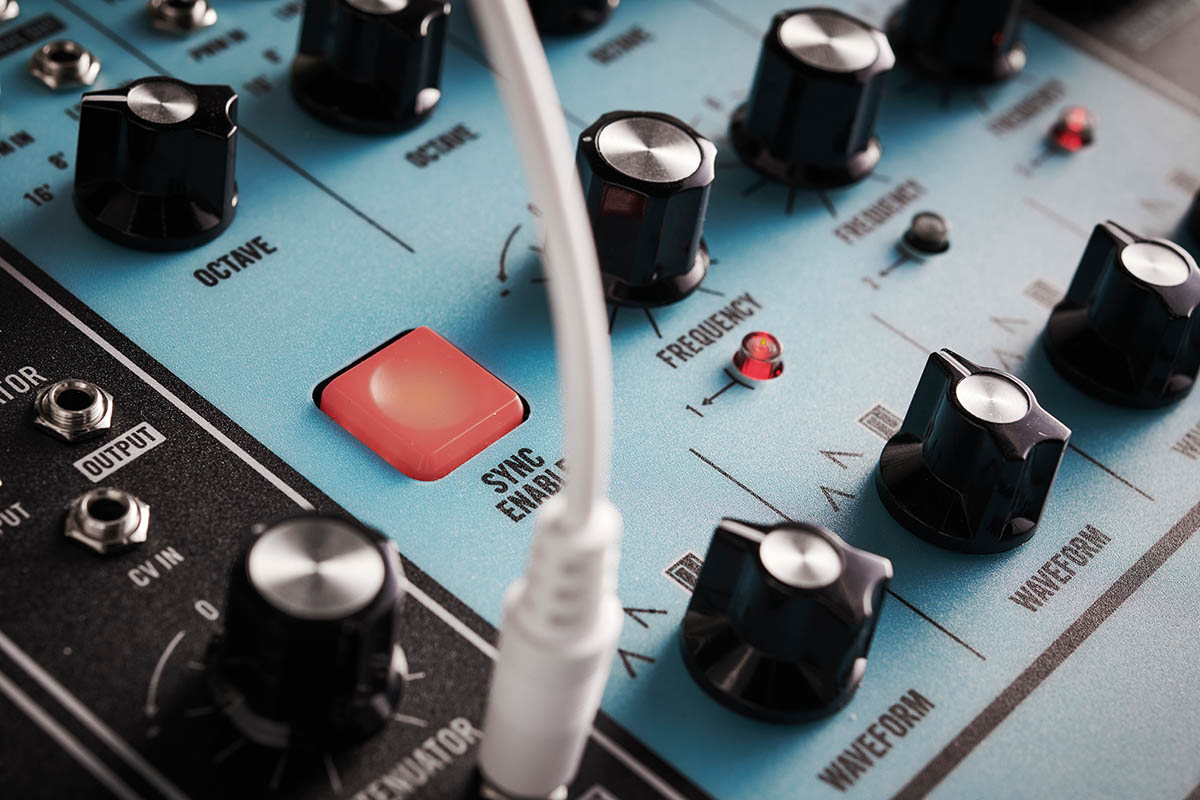
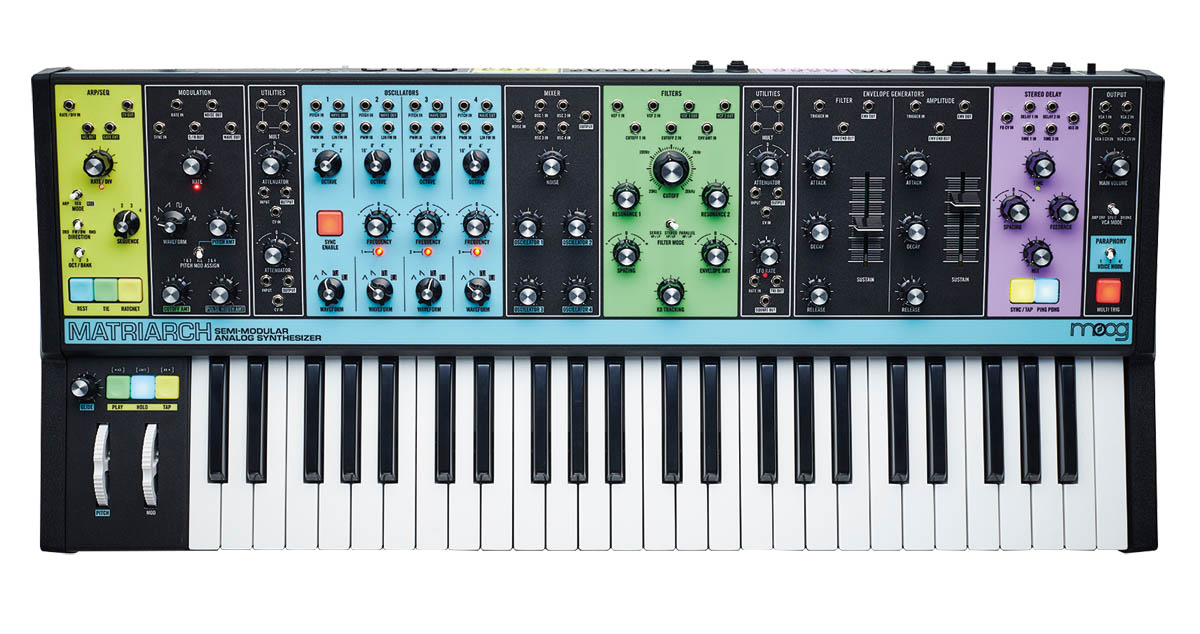
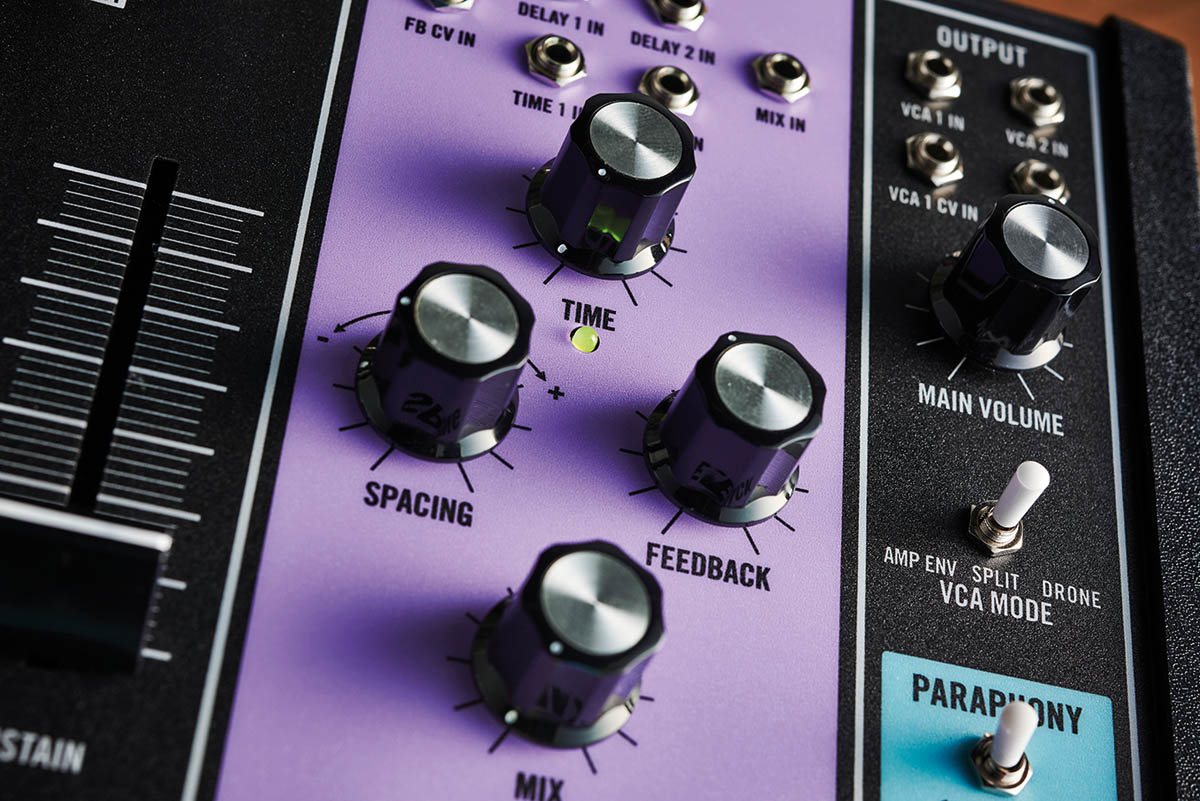
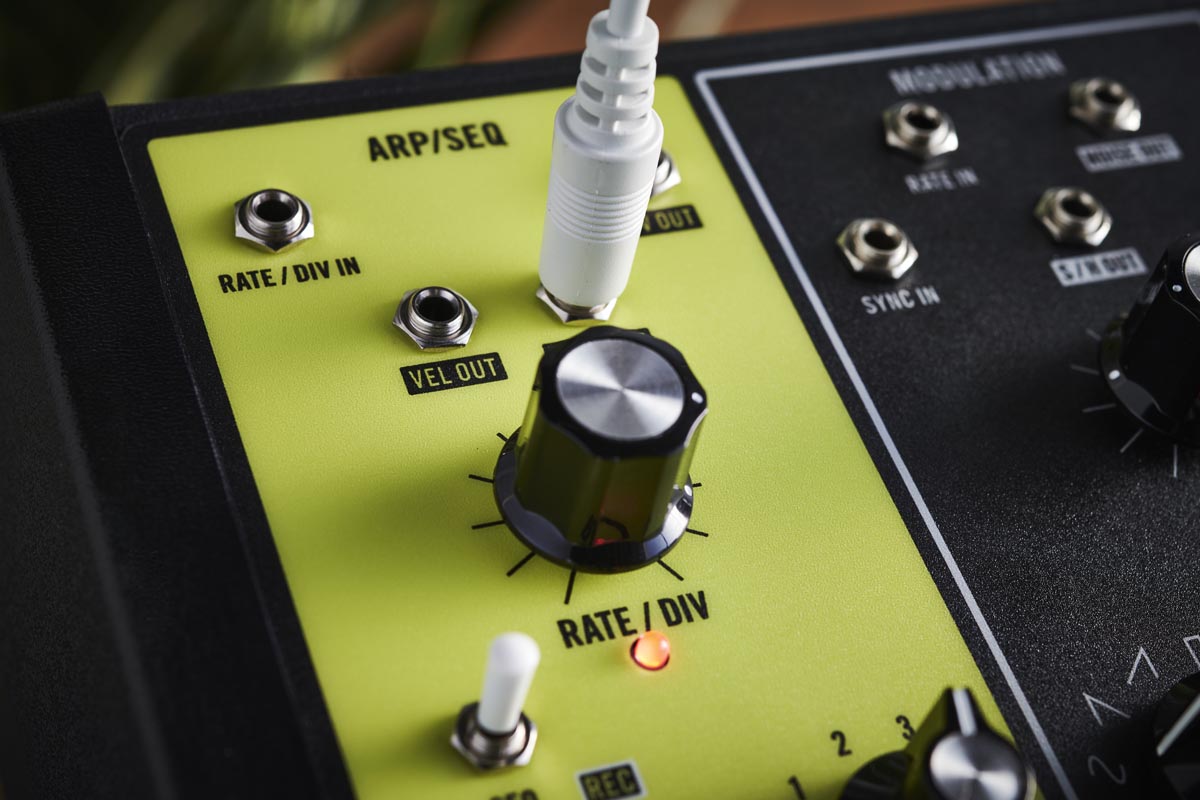
Next up is the CP-3 Moog Modular-based mixer for the four oscillators, which is key to a lot of the Matriarch’s old-school Moog Modular-ish character! You can really detail your sonics here with the oscillator levels having a huge bearing on how much the mixer saturates and how the filter is driven.
You can go from clean to nicely driven and textured or anywhere in between – versatile is the word! And of course, this section also has five CV inputs and an output for further patchability.
The filter section is also refreshingly versatile (and sounds fantastic) and once again is based on the highly regarded Moog 904A module. This is a stereo filter (again like the Voyager) but with three switchable modes – Series HP/LP, Stereo LP/LP, and Parallel HP/LP. You have a single big cutoff control, two resonance dials (one per fi lter L/R and you can use resonance to filter out lows too) a spacing control to blend/pan between the filters, plus envelope amount and keyboard tracking.
Even if you are new to semi-modular (or just want to play without any further patching) you can still get a very wide range of sounds from the Matriarch from the get-go
Once again, this is classic Moog and simply never sounds bad – the way you can have high-pass and low-pass filters panned left/right makes for some very unique animated sounds, giving the impression of more than one synth being played simultaneously. There’s lots of patchability in this section too; five CV inputs and two outputs.
The beauty here is that even if you are new to semi-modular (or just want to play without any further patching) you can still get a very wide range of sounds from the Matriarch from the get-go. It’s all very intuitive/elegant but complexity is readily available via the patch points too.
There are two typically punchy, patchable Moog ADSR envelopes (from the Moog 911 module; both with a lovely DJ-mixer-style long throw sustain slider) and these are hardwired to amp and filter. However, these can be patched to control almost anything else on the panel and with the use of the mult(iplier) and attenuator sections, you can send signals to multiple destinations with detailed control (as applies for the other modules too).
The Matriarch is a very elegantly designed self-contained synth; the nearest you can get to owning an expensive Moog modular but at a fraction of the cost
Patch points here include env out and env end out plus trigger inputs per-EG. Finally, there’s the output stage which again is based on a classic Moog Modular module – the 902. This is nicely sensitive to level and can be driven if required.
Three modes allow versatile control – Amp (both VCAs controlled by the amp EG, leaving the filter to control other choices), Split (one VCA controlled by the Amp EG and one by the Filter EG), and Drone which auto-triggers and decouples the VCAs from the EGs.
The versatility on offer in this section is very handy and patch points include two audio VCA inputs (plug in any audio here) plus two VCA CV inputs (allowing CV to control the VCAs’ output voltages for tremolo effects, for example).
To sum up, the Matriarch is a very elegantly designed self-contained synth; the nearest you can get to owning an expensive Moog modular but at a fraction of the cost. It has a great-feeling Fatar keyboard, audio rate modulation, intuitive sequencer and arpeggiator, killer analogue delay section, velocity and aftertouch and a very engaging soulful sound.
The patchability is also very well thought-out and allows you to travel very deep (if you want). A truly inspired design and one that’s very hard to stop playing/ exploring once you get your hands on it!
MusicRadar Verdict: The Matriarch is very inspiring. It’s well built, has the classic Moog Modular sound and is complex yet intuitive. A future classic!
Hands-on demos
loopop
Kraft Music
Expanding Sound
The web says
"Despite having a fairly diverse and large modular of my own, I found myself drawn in by the Matriarch’s construct, partly as it offers a very beautiful tonal centre, but also because it feels contained, manageable and immediate"
MusicTech
Specifications
- Moog Matriarch
- KEY FEATURES: Fatar 49-note semi-weighted keyboard with patchable velocity/aftertouch. 90 patch points. 4 Voyager-based analogue oscillators with osc sync. Moog Modular stereo fi lters and VCAs. 2 LFOs, 2 utility sections with mults and attenuators. 256-step poly-sequencer and arp. Stereo analogue delay module
- DIMENSIONS: 812 x 361 x 139mm WEIGHT: 13.6kg
- Moog
“Excels at unique modulated timbres, atonal drones and microtonal sequences that reinvent themselves each time you dare to touch the synth”: Soma Laboratories Lyra-4 review
“I used everything I knew about music”: How Green Day exceeded expectations with their most ambitious song
YouTube just added AI tools that makes musicians, library music and video editors redundant
